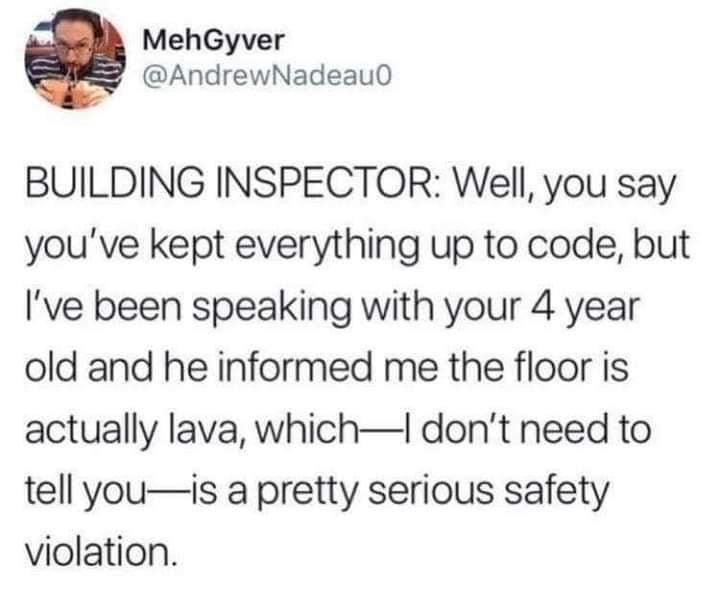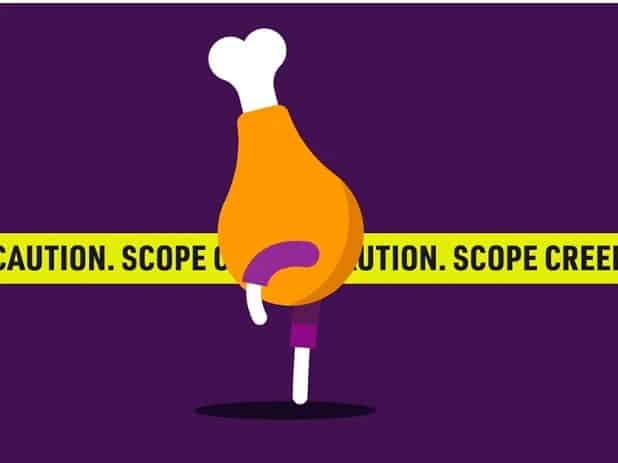Hey! Happy Saturday! Matt here.
Welcome to the Construction Curiosities newsletter.

If you are new here, THANK YOU for giving me a share of your inbox and a few minutes of your attention. I’ll do my best to make it worth your investment.
This weekly Newsletter explores my Curiosities about the Construction Industry. It’s meant to make you think, smile, and become a better, more well-informed Construction Professional.
Summary
This week we will look at:
- Six Steps: To Kill Scope Creep
- One Article: Construction Champions 2023
- One (other) Podcast: IPM
- One Tweet: 20 minutes
- One Meme: Dad Joke – Code Joke
A quick ask before we get into it.
Are you enjoying and getting value from the Construction Curiosities Newsletter and The CM Mentors Podcast?
If yes, please consider Sharing with your friends and colleagues that might also enjoy it and get value.
If not, I want to know why. What is missing that would make it valuable to the point you would share it with your friends & colleagues? Email me at: [email protected] and let me know!
Six Steps

A 2019 white paper that looked at 37 construction projects found that Scope Creep accounted for an average INCREASE of $𝟳𝟮𝟱𝗸 and 𝟯 𝗺𝗼𝗻𝘁𝗵𝘀.
The Project Management Institute states that 𝟯𝟯% of Projects experience scope creep. Though I’d be willing to bet it’s WAY higher in the construction industry.
Other than being “bad,” What is scope creep?
PMI’s PMBOK guide defines describes scope creep as “adding features and functionality (project scope) without addressing the effects on time, costs, and resources, or without customer approval.”
Whether proper or not, I define scope creep to also include items such as all owner-directed changes (even if they agree to the effects on time/ cost/ resources) and dealing with unforeseen conditions.
Hopefully, you have a good system for processing changes but change of any type creates chaos on a Construction Project. Chaos interrupts flow. Interrupted flow adds cost and time to the project.

So, you’re working on a project and you want to make sure you don’t get bogged down by scope creep. It’s a common problem, but there are some things you can do to prevent it. Here are six steps to help you kill scope creep:
- RTFC – Read The F’n Contract. This is my #1 “Hack for Young Construction Professionals” for a reason. (more on the hacks in the podcast section below). You have to make sure you know exactly what’s included in your contract and what’s not. Oddly enough, You can’t spot scope creep unless you know what the scope is.
- Make sure the project owner understands the scope completely as well. How many times when you are in the middle of construction, have you had an owner say, “I thought we were getting XYZ?” To expand on that, make sure ALL stakeholders on the owner’s side understands the scope too. There is nothing worse than one department coming in after construction has started and wanting to make changes when they were left in the dark during the design process.
- Create a change management plan that includes a clear approval process. If changes need to be made to the project scope, this plan will outline the steps that need to be taken. The approval process ensures all potential changes are reviewed and approved by the right people and ideally there is a single point of contact to keep communication constant.
- Limit direct and unmanaged communication between the owner and the field. It’s dangerous when someone on the owner’s side goes out into the field and starts directing the craftsmen. Typically neither side in that situation fully understands the contract and the scope. And the owner just ends up telling the trades what they “want” or what they “think” should be done whether it is in scope or not. And the boots on the ground want to make the owner happy and just do it. Back to #3, a proper change management plan with formal approvals stops that in its tracks.
- Communicate clearly with the owner about how any changes will impact the cost and schedule of the project. Make sure the owner understands the potential consequences of any changes to the project scope and is aware of any additional costs or delays that may result. You might be surprised that an owner would decide against adding something frivolous when they realize early in the decision-making that it will impact the critical path and extend the project 3 additional months.
- Go a step further to uncover any unforeseen conditions. Let’s say you are doing a renovation project and you have “as-builts.” There is always concern about if the as-builts are actually as it is built. During the design process, I’d recommend doing as much investigation to “fact check” the as-builts as you can. This could even include some selective demolition to see what is actually behind walls or above hard-lid ceilings. The more you know upfront, the fewer surprises and changes that come later.
These are just a few tips on scope creep that I have from my experiences. Do you have additional tips you can share with the community?
Pop Quiz Trivia Question
How long did it take to build the Hoover Dam?
a) 18 months
b) 5 years
c) 7 years
d) 13 years
Answer is at the bottom of the Newsletter
One Article
This last week was Women in Construction Week. To celebrate, I wanted to share this list of 31 women that “stand as examples of how intuition, dedication, and intelligence are shaping the industry.”
Construction Champions 2023
One (other) Podcast
Not too long ago I got the chance to sit down with Kyle Nitchen on his Influential Project Manager podcast and Kyle dropped our episode yesterday.
It was a fun conversation where we chat a little bit about my background and some issues we are both seeing in the current construction landscape.
Then we dive into the details of a LinkedIn post I made last year, where I give “22 Hacks to Win as a Young Construction Professional.” We both share our experiences and personal Lessons Learned around these “hacks.”
| The Influential Project Manager iPM #07 – 22 Hacks for Young Construction Professionals | Matt Graves Listen now (39 min) | In this episode, we sit down with Matt Graves, a seasoned construction professional, who shares his invaluable insights on how young professionals can thrive in the industry. With over a decade of experience in construction management, Matt has distilled his knowledge into 22 actionable hacks that can help young professionals succeed in the competitive … Listen now |
You all should go follow Kyle and his IMP podcast and newsletter. He’s sharing “actionable advice for PMs to enhance leadership skills, deepen knowledge of best practices, and maximize value.”
One Tweet
Be honest with yourself… how much time do you spend preparing for a conversation or meeting.
Probably not enough. When things are busy it’s way too tempting to walk into a meeting and “wing it.” I’m guilty. We all are.
One Meme
⚠ WARNING DAD JOKE AHEAD ⚠



